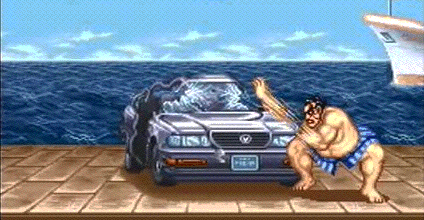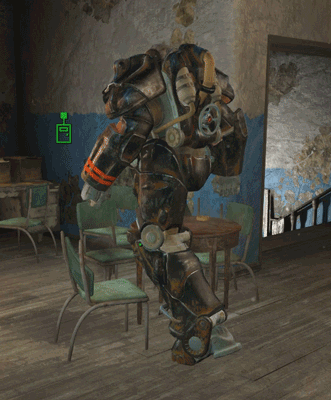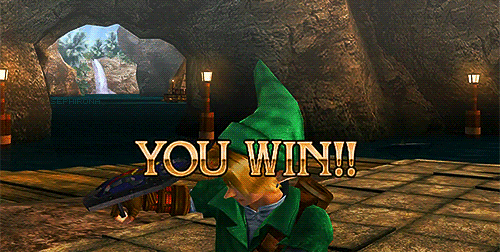Updated: January 3, 2025- 7 min read
So you want to work in the Gaming industry? Gaming is more than just an insanely popular form of entertainment. In 2023 the video game industry is worth $221.4 billion. Thanks to advances in technology, the scope of Gaming is wide and varied, and there’s plenty of space for talented Product Managers! You could be working on the next Triple-A game, a world-famous classic, or the next big hit for the mobile world. Do you have what it takes to be a Gaming Product Manager?

State of the Industry
No one can say that there’s no money in games! According to Statista, by 2027 there will be more than 2.7 million gamers worldwide.
Gaming has also become more competitive than ever – with eSports bringing in $1650 million USD, and online FPS multiplayer games like Fortnite taking off on a global scale.
Thanks to the evolution of smartphones, mobile games have gone from being the realm of your estranged Aunt who keeps sending you Farmville requests, to owning a sizeable portion of the market. In 2021 Playerunknown’s Battlegrounds earned $2 billion. And the mobile Gaming market just keeps growing.
Perhaps you’re just a casual gamer doing a bit of research into getting into the industry. In that case, it’d be good to research some of the hot topics among gamers and professionals alike. Here are some of the biggest stories and controversies from the last few years, which still have a lasting impact today:
Gamergate: An online movement concerning ethics in game journalism, which extended to the Gaming community as a whole.
Microtransactions: A way of providing low-cost but high-quality games. Thought of by many as controversial because games can become ‘pay-to-play’ giving wealthier players an unfair advantage.
Violence in video games: An ongoing debate as old as entertainment itself; does violence in games cause IRL violent behaviour?

What Product Management in Gaming Looks Like
Working in the Gaming industry, for the most part, is like any other Product Management job. You’ll have to prioritize what gets worked on next, and make sure that the games/features you release are aligned with company OKRs. You’ll be managing a team of designers, and working in tandem with marketing, PR, and in some cases, the writers.
The Game Development Team
You’ll be working with a lot of creative and artistic minds. Learning to say no to people who see you as a roadblock to their vision will be challenging, but it’s very important. With games like The Witcher and Fallout, the writers are trying to tell a story. In this environment, you can almost think of yourself as a movie director – having to balance the creative vision with what is physically and economically possible.

There’s also the technology to consider, as Gaming comes with its own unique tech that isn’t found in other industries. For example, if you’re working on the next Triple-A game, you’d have to be very familiar with the engine used to build the world (Unity, Unreal, Frostbite, etc). Technical PMs will have an advantage, and non-technical PMs will have to be fast learners! While you’ll still be working with a development team, you’ll be working with a lot of different people in your day-to-day, who you might not otherwise have worked with. For example:
Designers: In game development, they’ll be specializing in things like interface, mechanics, level design, sprites, menus, dialogue, characters, and weapons… its product design on another level!
Programmers: Software engineers who specialize in game development and gaming platforms. Depending on your game, they could also be working on virtual reality. They’ll work on physics, sound, AI, graphics, network communications, gameplay, scripting, UI…just to name a few!
Artists: They’ll be working on everything from concept art to the skins used in the final game. They may work in 2D, 3D, or both. Depending on the size of your game, you might have artists who focus solely on terrains, or lighting, or character design. A game without artists would just be a bunch of code!
Level designers: They help create the tools that designers and programmers use to build the game. They often create customer high-level scripting languages.
Bugs and Crunch
Your studio may be under the control of a larger conglomerate, such as Electronic Arts (EA). This can be a blessing in terms of access to resources, but you’ll also be at their mercy in terms of what they expect from you. You might find yourself working to tighter deadlines than you would like so that stakeholder management will be absolutely vital.
You’ll probably have to face the fact that your game will be released with bugs!
Crunch: a period of the last few weeks/months of game development when teams are severely pressed for time, is the source of many many bugs! The extra time that the teams have between the game discs being printed and sent out to stores, and the official release date, is precious. It gives teams time to keep working on the game, fixing the bugs that users will experience when they first start playing.
If you’re lucky, they’ll be pretty funny and you can get them patched quickly enough for your community to forgive you!

Pricing structures will have a huge impact on how your game is developed, which might at some point be out of your hands. If the developers decide that your game needs loot boxes and micro-transactions, you’ll have to seriously alter your roadmap.
But it’s a challenge that thousands of Gaming professionals take on every day, and the rewards speak for themselves. If you’re passionate about Gaming (and it’s certainly not an industry that disappearing any time soon!) then the challenges will pale in comparison to building worlds and bringing them to millions of people. The passion that players will bring to your game will be second to none.
Check out this talk from a former EA Product Manager:
How to Make the Transition
Naturally, the easiest transition to a Product Manager position in Gaming is from a PM position in a different industry. The lifecycle of a game is similar to the lifecycle of other software products, so having some SaaS experience could also be advantageous. Having an understanding of UX/UI will also be a great benefit when transitioning to Gaming. Having the right personality is also a huge bonus.

If you don’t have previous work experience specifically in Gaming, you’ll have to work extra hard to prove that it’s your passion. You could try teaming up with a designer to build your own game as a side project or find an ongoing crowd-sourced fan project like Skyblivion.
To learn more about the technical side of games, you could dabble in the modding community. You can also go to different trade events, which would not only be a great place to network, but also a way to learn about the industry in a dynamic and exciting environment.
Once you’ve built up more of a Gaming background, you can work towards getting an interview as you would for any other Product Management job. Playing more games will probably be helpful as well! Spend time getting to know what different gamining communities are like, what the popular video games and streaming services are. Immerse yourself in the video game market the same way you would any product market.
If you’re brand new to both Product Management and Gaming, we recommend getting into PM first, and then making a horizontal transition to gaming. You can make a start by getting certified.

Resources
For Gaming
Blood Sweat and Pixels by Jason Schreir – this book is a great read for any prospective Gaming PMs, as it gives you some insider knowledge of what it’s like at the very top of the industry.
Games Industry Biz – this is the place for all things relating to the industry
E3 – the biggest Gaming conference of the year. Always hotly anticipated, and can be watched for free via livestream.
How awesome is it to be the Product Manager for an esports company? – a great Medium article for prospective esports PMs.
For Product Management
We’ve got everything you could want for an aspiring PM! check out our Free Resource Collection to find books, podcasts, checklists, blogs, events, jobs, and our communities.

Updated: January 3, 2025





